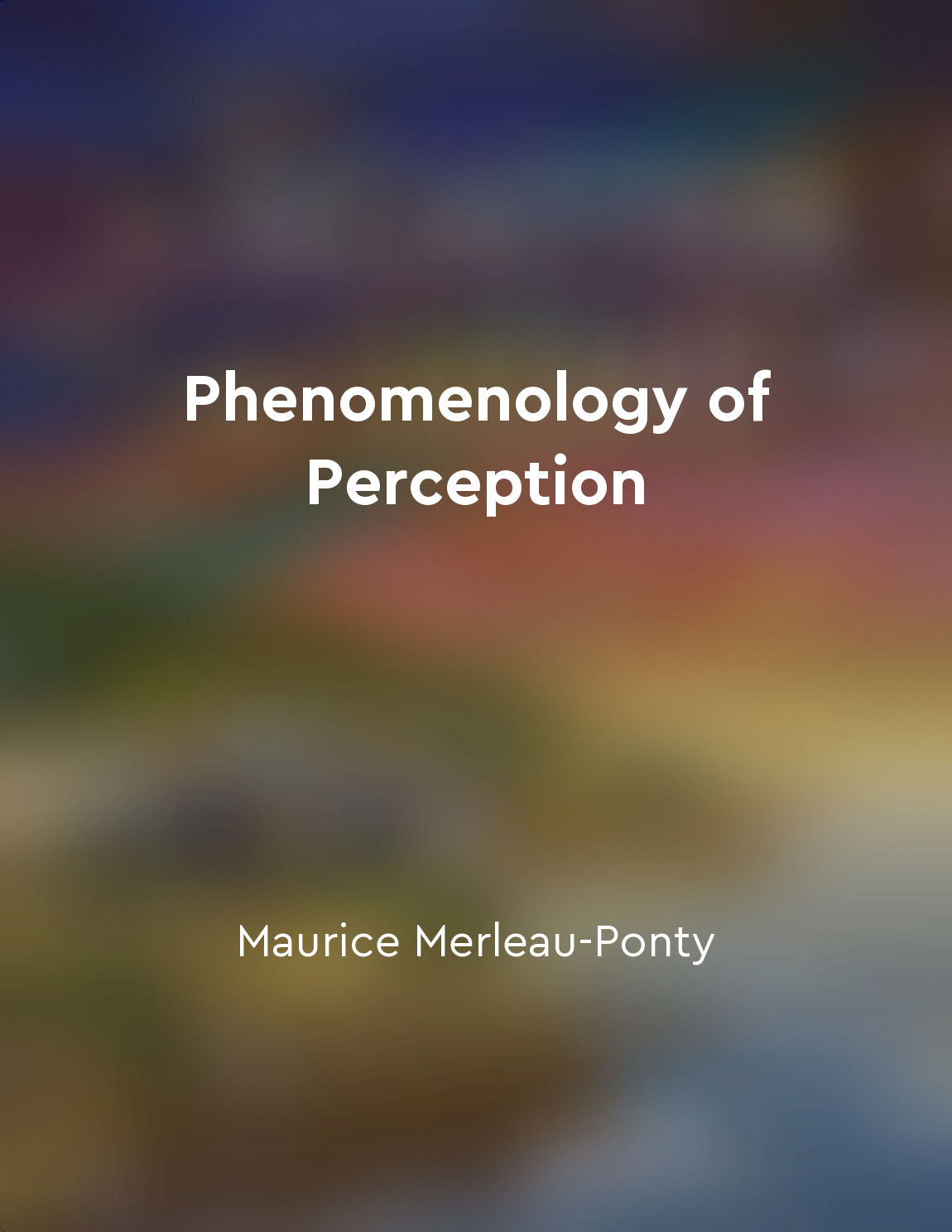Our brain can create vivid sensory experiences without external stimuli from "summary" of Phantoms in the Brain by V. S. Ramachandran
Ramachandran explores the fascinating phenomenon of how our brains are capable of conjuring up sensory experiences even in the absence of any external stimuli. He delves into the intricate workings of the brain, uncovering the mechanisms behind these vivid sensory perceptions that seem to materialize out of thin air. Through his research and observations, he sheds light on the remarkable capacity of the brain to generate rich and detailed sensory experiences, painting a vivid picture of the complex interplay between our neural pathways. One striking example he presents is the case of patients who have undergone amputation but continue to experience sensations in their missing limbs. These phantom sensations highlight the brain's ability to create a sense of touch, movement, and even pain in a limb that no longer exists. By studying these patients, Ramachandran unravels the intricate processes by which the brain constructs these phantom sensations, offering valuable insights into the mysteries of human perception. Moreover, Ramachandran discusses how the brain can simulate other sensory modalities, such as vision and hearing, without any external input. He describes experiments where individuals report vivid visual images or sounds in the absence of any corresponding stimuli, illustrating the brain's capacity to generate sensory experiences independently. This phenomenon challenges our traditional understanding of perception, suggesting that our brains are capable of creating elaborate sensory worlds beyond what is directly perceived through our senses. Through his exploration of phantom sensations and other sensory illusions, Ramachandran invites us to reconsider the nature of reality and the power of the human brain to shape our experience of the world. By unraveling the mysteries of sensory perception, he offers a glimpse into the extraordinary capabilities of the brain and the complex processes that underlie our everyday experiences. In doing so, he opens up new avenues for understanding the inner workings of the mind and the profound ways in which our brains shape our perception of reality.Similar Posts

Telepathic communication through neural interfaces
Neural interfaces are becoming increasingly sophisticated, allowing for direct communication between brains. These interfaces c...
Emotions are the bridge between the mind and body
Emotions are the bridge between the mind and body. They are the language that "speaks" to every cell in our body. When we exper...
Skepticism is necessary
Skepticism is necessary. It is the foundation upon which all knowledge is built. Without skepticism, we would blindly accept ev...

Our brains are wired to seek patterns
Our brains, amazing as they are, have a fascinating tendency to look for patterns in the world around us. This pattern-seeking ...
Belief depends on evidence and probability
In human nature, belief is not a result of mere choice or determination. Instead, it is dependent on evidence and probability. ...
Cognitive biases can affect decisionmaking
Cognitive biases refer to the systematic errors in thinking that can affect our decision-making process. These biases are a res...

Our bodily experiences shape our sense of self
Our sense of self is not something that exists in isolation from the world around us. Rather, it is intricately linked to our b...
Neurotransmitters play a crucial role in brain function
Neurotransmitters are vital components in the intricate network that is the human brain. These chemical messengers play a pivot...
Morality is rooted in both science and religion
Francis Collins argues that morality is not solely derived from either science or religion, but rather is rooted in a combinati...
Behavior is a manifestation of mental processes
According to Ryle's analysis, behavior is not merely a reflection or externalization of underlying mental processes; rather, it...

